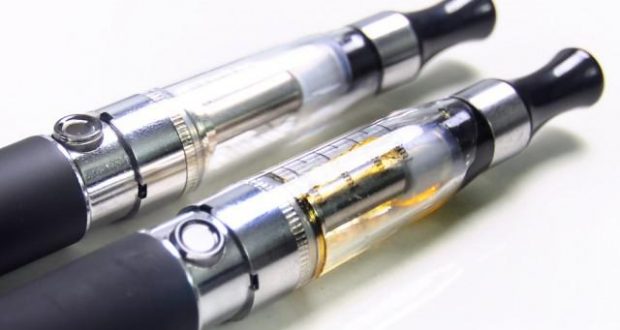The trend of drug abuse among the youths as has become rampant on the streets of Ghana.
Recently, the abuse of tramadol has been widely publicized with the result that the youth is now inclining towards a more sophisticated means of consuming nicotine.
The tobacco industry has replaced traditional cigarettes with electronic cigarettes, or E Cigarettes as they are known, to entice their clientele base mainly the youth with a nicotine fix that does not include sucking burning paper tar, tobacco and thousands of harmful chemicals.
For the Ghanaian youth this is a recent trend, but because of the high cost of electronic cigarettes is, it’s mostly used by quite a few.
The non-governmental organization, Vision for Alternative Development (VALD) has called for electronic cigarettes to be banned from the Ghanaian market especially if they have not been registered by the Food and Drugs Authority (FDA) before it becomes a huge problem.
A source who trades in electronic cigarettes disclosed that his clientele base encompasses elderly men who want to quit smoking and the youth.
He further explained that, the youth who purchase his products mainly want to try it out or want to fit in with their ‘vaping’ friends and mostly for recreational purposes.
He also elaborated that the price of the electronic cigarettes depends on the brands, material used, sustainability and sophistication of the products with prices ranging from Ghc 50 to 650 Ghc.
In a recent conversation with the media, the Principal Researcher of the Ghana Health Service (GHS), Divine Darlington Logo says a research conducted showed that most youths have ditched the smoking of traditional tobacco cigarettes for e-cigarettes and shisha.
The research revealed that the rate of smoking shisha and e-cigarettes among young people has shot up to 5.3 percent, higher than the traditional use of tobacco which stands at 2.8 percent.
It also showed that one puff from a shisha tube equaled the smoking of an entire cigarette and all the effects of smoking are in shisha and electronic cigarettes.
A source from the Food and Drugs Authority told Public Agenda that no e-cigarette product has been registered yet but if any is brought for registration it will approve it.
Background
An electronic cigarette is a battery-operated device that works by heating a liquid to generate an aerosol, commonly called a “vapor” that the user inhales.
Electronic cigarette is also known as e-cigarettes, e-cigs, electronic nicotine delivery systems (ENDS), vaporizer cigarettes, and vape pens, they are marketed as a way to stop or cut down on smoking.
Using e-cigarettes is commonly referred to as vaping. The liquid in the e-cigarette, called e-liquid, or e-juice, is usually made of nicotine, propylene glycol, glycerine, and flavorings. Not all e-liquids contain nicotine.
An e-cigarette is a long tube that usually resembles a cigarette, a cigar, a pipe, or a pen. Most are reusable, with replaceable and refillable cartridges, but some are disposable.
The first patent for a “smokeless, non-tobacco cigarette” was requested by Herbert A. Gilbert in 1963, but the current device did not appear until 2003.
The e-cigarette was invented by Hon Lik, a Chinese pharmacist, working for Golden Dragon Holdings, now known as Ruyan. The company started exporting into major markets in 2005 to 2006. There are now over 460 different brands on the market.
The nicotine content varies from zero to “extra-high,” or 24 to 36 milligrams (mg) per milliliter (ml).
Benefits
E-cigarettes claim to bypass many of the health risks of tobacco smoking, and to offer a more healthful alternative to cigarettes and other conventional forms of nicotine intake.
Some studies have found that using e-cigarettes can help some smokers quit.
Others suggest they offer “modest” benefits for those who want to quit smoking, but “good potential” for those who are cutting down.
The product is marketed as cool and safe, and offering a variety of flavors, manufacturers are keen to attract teens and adolescents, who often believe vaping is less hazardous than smoking.
However, that is not necessarily true, and in 2016, the Surgeon General declared e-cigarette use a “significant public health concern.”
Risks
Most e-cigarettes contain nicotine, which is addictive and triggers changes in the adolescent brain. It is hazardous during pregnancy as it can affect fetal development.
The aerosol contains solvents, flavorings, and toxicants, which the Surgeon General describes as either “harmful” or “potentially harmful.”
E-cigarettes expose the lungs to different substances. One of these is dicetyl, which can cause “popcorn lung,” a severe and irreversible lung disease.
Potentially fatal poisoning has resulted from accidentally swallowing and from inhaling c-cigarette liquid.
People who seek to quit smoking will stop using conventional and medically monitored methods of doing so.
Those who use or who have used e-cigarettes are be less likely to stop smoking altogether.
Teens who use e-cigarette products are more likely to start using regular tobacco as well.
The flavorings, the marketing, and the concept that it is not harmful all tempt teenagers to start vaping. There is concern that this increases the chance that they will smoke conventional cigarettes later.
By Sanna Tehrani
 Public Agenda NewsPaper Ghana's only Advocacy & Development Newspaper
Public Agenda NewsPaper Ghana's only Advocacy & Development Newspaper







